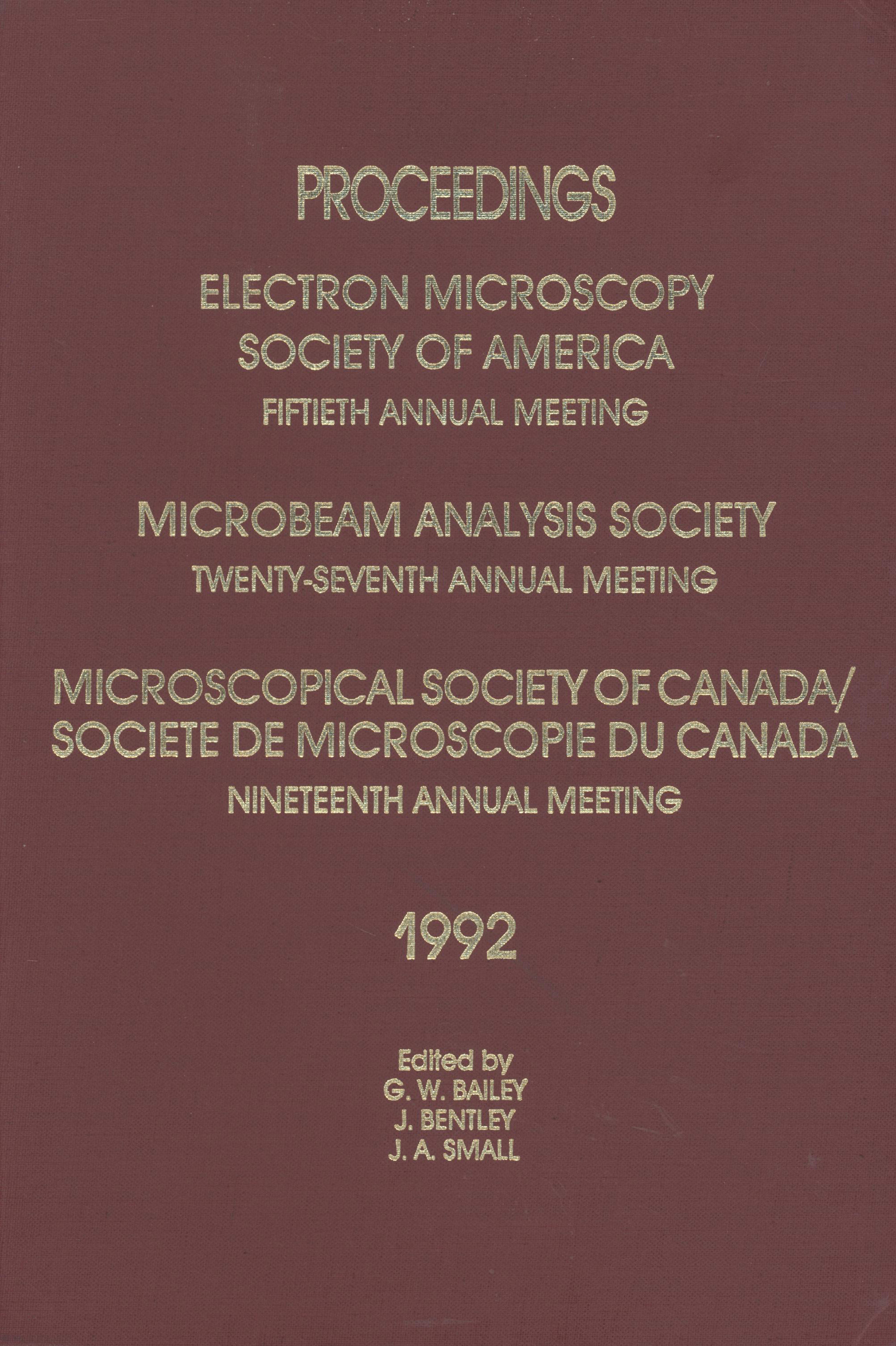Article contents
Scanning Electron Microscopy Study of Porous Anodic Films on Aluminum
Published online by Cambridge University Press: 18 June 2020
Extract
If aluminum is anodized in a bath, such as sulfuric acid, in which the anodic oxide coating has appreciable solubility, then the oxide layer may grow to a thickness of many microns. The resulting film can be regarded as consisting of two layers, a thin barrier layer adjoining the surface of. the metal, and an outer thick film containing pores. The latter convey the electrolyte to the barrier layer, permitting continued oxidation.
We have examined the structure of a number of sulfuric acid anodized films to assess the applicability of the two principal models of the pore structure. The older model represented the pores as rather regularly spaced, uniform channels running nearly normal to the oxide surface, separated by walls of amorphous alumina. Although conceived as starshaped rather than circular in cross-section, experimental evidence has pointed to the latter. In this ideal model, the porous film was made up of hexagonal cells of amorphous alumina, each containing a central pore.
- Type
- Thin Films
- Information
- Copyright
- Copyright © Claitor’s Publishing Division 1975
- 1
- Cited by


